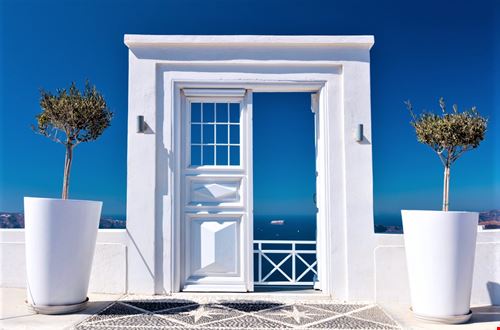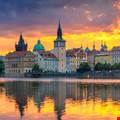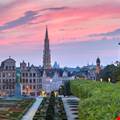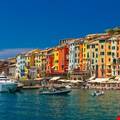Curiosities about Madrid, where to stay and what to do
Looking for accommodation in Madrid? In this article we offer you a short guide to the best B&b's in Madrid, as well as useful information on the best area to stay in, the traditional dishes of Madrid cuisine, what to visit, and the neighbourhoods with the most nightlife.
Madrid is a city full of art, to be discovered on foot, and get lost in its narrow streets and alleys. The only important advice is to avoid a midsummer visit to Madrid, it becomes particularly hot. A spring trip is ideal.
What are the best areas to stay in Madrid?
If you are planning a trip to Madrid and are wondering which are the best areas to stay in, you are in the right place. Madrid offers a wide range of neighbourhoods, each with its own atmosphere and characteristics, making them suitable for different preferences and budgets.
Where can I find a cheap hotel in Madrid? Finding a cheap hotel in Madrid can seem like a challenge, but there are many options available if you know where to look. Neighbourhoods such as Malasaña, Lavapiés and Argüelles/Moncloa offer affordable accommodation, mixing vibrant nightlife and local culture with affordability.
Which neighbourhoods are recommended for accommodation in Madrid? When it comes to choosing the best neighbourhoods to stay in Madrid, here are some options to consider:
- Centro: Puerta del Sol, Gran Via and Opera are in the heart of the city, perfect if you want to be at the centre of the action and within walking distance of the main tourist attractions.
- Retiro: offers a quiet escape from the hustle and bustle of the city, close to Retiro Park, ideal for those looking for a bit of peace without straying too far from the centre.
- Chueca: known for its inclusive atmosphere and lively nightlife, Chueca is great for those seeking entertainment and culinary excellence.
- Cortes / Barrio de Las Letras: famous for its rich literary history and proximity to major museums, it is ideal for culture enthusiasts.
- Salamanca: if you are looking for a more refined experience, Salamanca offers elegance with its luxury boutiques, art galleries and sophisticated restaurants.
- Malasaña: this trendy neighbourhood is perfect for those in search of stylish cafés, vintage shops and a lively art scene.
- La Latina and Lavapiés: offer an authentic Madrid experience with their traditional markets, tapas bars and street festivals.
- Argüelles / Moncloa: ideal for students and young travellers, these neighbourhoods offer cheap accommodation and a lively youthful atmosphere.
Your Madrid tour: what to see
Your tour in Madrid promises to be an unforgettable experience, full of culture, history, and of course, football! Here are some of the must-see destinations:
- Gran Via: start your adventure on Gran Via, the beating heart of the city. This magnificent avenue is famous for its beautiful Art Deco and Beaux-Arts buildings, as well as being a paradise for shopping and entertainment.
- Lavapiés: head towards Lavapiés, an eclectic neighbourhood known for its bohemian atmosphere. Here you will find a fascinating mix of cultures, street art, and restaurants offering cuisines from all over the world.
- Latina: stroll through its narrow lively streets, particularly bustling at weekends. Don't miss the historic markets and numerous tapas bars where you can sample authentic Spanish flavours.
- Chueca: visit Chueca, the vibrant and trendy neighbourhood known for its LGBT+ friendly scene, unique boutiques, and a variety of nightclubs and cafés.
- Salamanca: explore Salamanca, the elegant neighbourhood with luxurious boutiques, art galleries and fine restaurants. Perfect for those looking for a high-end shopping experience.
- Chamberì: discover Chamberì, a district with a rich cultural offer, including museums, theatres and galleries, and a lively culinary scene.
- Palos de La Frontera: is lesser known, yet offers quiet corners and parks, ideal for a relaxing break from the hustle and bustle of the city.
- Santiago Bernabeu Stadium: for football fans, a visit to the Santiago Bernabeu Stadium is a must. Take a close look at the impressive home of Real Madrid, where you can also take a stadium tour and visit the museum to immerse yourself in the history of one of the world's most titled clubs.
- Retiro Park: considered Madrid's green lung, Retiro Park is the perfect place to relax, take a boat ride on the lake or admire the imposing Monument to Alfonso XII.
- Museo del Prado: One of the most famous art museums in the world, the Prado houses a priceless collection of European artworks, with pieces by Velázquez, Goya and many others.
- Palacio Real: the majestic official residence of the Spanish monarchy offers visitors the chance to explore the opulence and elegance of the royal salons, art galleries and gardens.
- Plaza Mayor: this historic square has been the centre of public life in Madrid for centuries, surrounded by imposing buildings and full of open-air cafés where you can savour the atmosphere of the city.
- Mercado de San Miguel: close to the Plaza Mayor, this iron and glass gastronomic market is the ideal place to sample varieties of tapas, Spanish wines and other gourmet products.
- Temple of Debod: an ancient Egyptian temple, donated to Spain, also offers one of the best vantage points to enjoy the sunset in Madrid.
- Puerta del Sol: another iconic square in Madrid, known for the clock that marks the countdown to New Year's Eve celebrations in Spain.
What are the best hotels in Madrid?
Choose the best hotels in Madrid, according to your budget range, and this shall help you orient yourself on the right tour of Madrid.
Below we have selected some of the best hotels in Madrid that you could consider for your stay in the beautiful Spanish capital.
- Room Mate Oscar
- Hotel Princesa Plaza Madrid
- Principe Pio
- NH Madrid Lagasca
- Petit Palace Plaza del Carmen
Prefer other hotels? Visit Bluepillow's Spain page and discover special solutions suitable for you.
Want to visit other cities in Spain? Read our article on Barcelona and organise your own grand tour.
Things to know about Madrid
Madrid is a city that has much to offer. Here are 5 curiosities about Madrid that might be interesting to know.
- Magerit is the oldest name for Madrid and comes from Arabic. It means 'place rich in water sources';
- The symbol of Madrid depicts a bear standing on its hind legs, grasping the trunk of an arbutus to eat its berries. This image symbolically represents the growth of the city, emphasising the importance of wood, a crucial resource for the development and construction of the country.
- Bullfighting is a fascinating and controversial subject. If you are interested in exploring this Spanish tradition, visit the Taurino Museum. Here you can learn more about the history and evolution of the Traje de Luces, the iconic bullfighter's outfit. In addition, the museum exhibits the suit worn by Manolete, the legendary bullfighter, on the day he lost his life in the Plaza de Toros in Linares.
- Whether you are a football fan or not, at the Santiago Bernabéu stadium is where Real Madrid plays, and is one of the strongest teams in the world.
- Tapas represent one of Madrid's main culinary traditions. The origin of tapas, small aperitifs served with drinks, may date back to the 13th century, when they were offered to carters in taverns to prevent drunkenness and maintain order. This tradition led to the custom of 'covering' the glass with a piece of bread and ham, hence the term 'tapas'. Tapas have evolved considerably, becoming a key element of Spanish gastronomy, with varieties ranging from boquerones en vinagre (marinated anchovies) to empanadas, dumplings filled with vegetables, meat or tuna. Tapas can be enjoyed in small portions or as an appetiser before moving on to more substantial dishes such as chorizo, jamón serrano, tortilla de patatas or mushrooms with garlic and ham.
A trip is not a trip if one cannot appreciate all aspects of the destination. Spanish cuisine is one of them. Let's find out next which traditional Madrid dishes are a must.
Traditional Madrid cuisine
Madrid cuisine offers a delicious exploration of Spanish flavours, with traditional dishes that reflect its rich culinary history.
Among the must-try specialities is 'Cocido Madrileño', a hearty stew of meat, vegetables and chickpeas, which is served in several dishes and is the ultimate comfort food.
The infamous 'Tortilla Española', is a potato and onion omelette, simple but flavourful. Prefer more spice, then you cannot miss the 'Callos a la Madrileña', a spicy tripe dish.
For a quick snack or appetiser, 'Patatas Bravas', diced potatoes served with a spicy sauce, are a popular option. Finally, the 'Churros con Chocolate', dessert, is fried and dipped in thick hot chocolate, and offers a perfect sweet ending.
These dishes, among many others, invite you on a culinary journey through the authentic tastes of Madrid.
A bit of brief Madrid history
Madrid has a fascinating history that began long before it became the vibrant capital we know today. As mentioned, Madrid’s first name was Magerit, the Arabic for 'land rich in water'. This enchanting description tells us of a place full of life, chosen by Philip II to build his palace. A place that has, over time, blossomed into modern Madrid.
Our story begins in 865, when Emir Muhammed I built a fortress at Mayrit, next to the Manzanares river. Mayrit, meaning 'abundance of waterways', was a perfect place for a fortress. Even the city's first coat of arms recalls this connection to water: it speaks of a city built on water, protected by walls as strong as fire.
For a long time, Madrid was an Islamic city, until Alfonso VI of Castile conquered it in 1083. Of that ancient Madrid, few traces remain, and these are fascinating. For example, in Calle Mayor, where the Major Mosque once stood, are some historical remains.
Nearby, in the Cuesta de la Vega, are the remains of the ancient wall that surrounded the citadel, a place where a statue of the Virgin Mary was found, with a candle that had been burning for over four centuries.
Madrid also offers a journey through time with its museums. The National Archaeological Museum and the Lázaro Galdiano and Prado Museums take us from Visigothic times to the Middle Ages and beyond, displaying works of art that tell stories of times past.
The Christian Wall of Madrid is also an important piece of the city's history, built at a time of great change.
Visiting Madrid is like walking through the pages of a living history book. Every corner tells a story, every stone has a memory. It is an invitation to discover the deep roots and adventures of those who lived here long ago, leaving us a legacy of culture, art and resilience that continues to shape Madrid today.
Want to keep up to date with what's happening in the capital, even before you embark on your trip? Find news about Madrid here:
Frequently asked questions about where to find accommodation in Madrid
What are the tourist attractions near La Latina?
In this part of the city, you can fully immerse yourself into the culture of the place, don't miss Plaza de la Cebada, a famous meeting place for locals, the Rastro market, one of the capital's most famous markets and also the busiest, along with the Parque de las Vistillas, a true oasis of greenery and peace, and the Real Basilica of San Francisco the Great.
In this part of the city, if you like to fully immerse yourself in the culture, don't miss Plaza de la Cebada - a popular meeting place for locals -, the Rastro market - one of the capital's most famous and also busiest markets, along with the Parque de las Vistillas - a true oasis of greenery and peace - and the Real Basilica of San Francisco the Great.
What is the climate like in Madrid
The climate in Madrid is typically continental, with very cold winters and very hot summers. The sun is present all year round, so you can enjoy beautiful days even when visiting the capitol in winter. The best time to visit Madrid is probably in spring, as the temperatures are pleasant, making it easier to get around.
Where can I find accommodation near Chueca?
Visit Bluepillow's Spain page and find out where best to stay near Chueca.
What are the best hotels in Salamanca?
Considering that Barrio de Salamanca is one of the most important neighbourhoods in Madrid, you should bear in mind that accommodation in this area will be, on average, more expensive than the others you can find. To look for accommodation in this neighbourhood on Spain’s Bluepillow.
Where can I find accommodation near Gran Via?
Visit Bluepillow's Spain page and find out where's the best place to stay near Gran Via.
Where can I find accommodation near Chamberí?
Visit Spain on Bluepillow and find out where the best accommodation is near Chamberi.
Where can I find accommodation near Santiago Bernabeu Stadium?
Visit Bluepillow's Spain page and find out where is best to stay near Santiago Bernabeu Stadium.
04/04/2024

Find your accommodation
Search for your favorite destination, customize your search and find the right place for you for your next trip.








